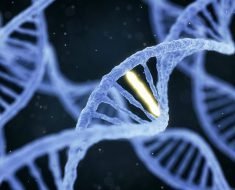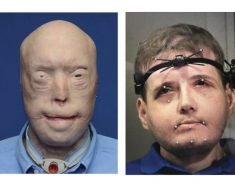Kyle Barton is a 28-year-old guy on the autism spectrum. But he lives like the diagnosis isn’t there.
It’s not that he’s in denial; he just doesn’t like the autism label.
He’s got other things on his mind, such as designing the latest development in a virtual learning program steered by the University of Texas at Dallas’ Center for BrainHealth.
The program, called Charisma, helps adults on the autism spectrum sharpen their perception of social cues and responses through real-time conversations in a virtual setting.
Barton knows the hurdles that high-functioning adults must jump for acceptance in a world that doesn’t “know what to do with them,” as he says. A world that would sometimes rather ignore them. A world that often seems just barely out of reach.
For him, it’s real life.
Barton spent two years looking for a job after graduating from the University of Texas at Dallas. Prospective employers laughed him out of dozens of interviews, he said. He’s even had people accuse him of not being on the spectrum.
“They still have this very Rain Man image of autism,” he said, referring to the 1988 movie starring Dustin Hoffman.
Now a staff instructor at the nonPareil Institute, a Plano-based nonprofit that teaches adults with autism job skills such as coding and video game design, Barton’s trying to make the world better for others like him.
“I liken being on the spectrum to sort of being separated by a chain link fence,” he said. “You can see through the links. You can see the larger world. You can stick your hands through the links. You can kind of feel it. You can smell it, taste and all that. But if you try to climb that fence, you find there’s barbed wire at the top. And that’s what it feels like.”
GETTING A CHANCE
Barton leans over a student’s shoulder as he furiously clicks his mouse. Clickety, click, click.
The student’s eyes never leave the screen as he works to build a castle scene during a beginning design course at nonPareil.
“Dude, I already like what you’re going for,” Barton tells the student.
Not that long ago, he was in the same seat.
Barton, who has brownish-blonde hair that flips to one side and wears button downs with a couple top buttons undone, came to the Plano-based center about four years ago—jobless after graduating two years earlier from UTD with a bachelor’s in psychology.
The institute was founded on the idea that by giving adults with autism technical and professional skills, they could lead more independent lives.
Only about 14 percent of adults with autism spectrum disorder who used services funded through state developmental disability agencies in 2014-15 held a paying job in their community, according to the 2017 National Autism Indicators Report from the Philadelphia-based A.J. Drexel Autism Institute.
Barton called the unemployment rate “abhorrent” and stressed the need for places like nonPareil that teach job skills and also employ former students.
“We try to not distinguish when we’re talking about someone. Whether they’re on the spectrum or not is not the primary piece of who they are,” said Daniel Faso, director of program engagement at nonPareil.
For Barton, meeting new people or being in a crowd can be a challenge. After college graduation, he struggled through job interviews, said his mother, Jill Barton.
“Kyle has a lot to offer. If he could just get a chance,” she said.
She ticked off accolades like his magna cum laude distinction at UTD, where he also was a dean’s scholar, and his summa cum laude honor at Collin College.
“He’s very brilliant. I say that as a mother, but he is very smart,” she said.
Barton, who was raised in Sachse and home-schooled most of his childhood, didn’t receive his official diagnosis until college.
But Jill saw the signs years earlier.
It was after watching a news broadcast when Barton was in middle school that she first began to wonder whether her son with a dry sense of humor that she called “extremely smart” but also anxious could be on the spectrum.
Because Barton was home-schooled, Jill Barton said, she didn’t seek a medical perspective because he didn’t need the learning assistance.
The challenge came after college when Barton began interviewing for jobs, and his anxiety worsened. He once told his mom it was like a physical pain inside.
“I knew it was tough for him, but I did not realize it was that much of a hardship,” she said.
A MOVIE THEATER OF HIS OWN
Barton is a film buff. When he can, he visits the Texas Theatre to watch classic flicks.
He talks about movies like they’re works of art, not “fleeting spectacles to be tossed aside with the popcorn tub.”
Now, he’s designed a movie theater of his own.
But here’s the catch: The theater isn’t real. It only exists on Barton’s computer screen. That means you can’t smell the buttery popcorn or lick its salty grease off your fingers.
It’s the newest piece to Charisma. The program puts adults and adolescents with autism spectrum disorder in social situations that can ignite fear and anxiety—such as ordering a drink from a stranger behind the counter at a coffee shop—and teaches them how to recognize social cues.
“Nothing is scripted or artificial, but it’s real people having real conversations as a practice in this game-like setting,” said Tandra Allen, who leads virtual training programs at the Center for BrainHealth.
Earlier this year, the university and nonPareil partnered to create the movie theater. The university also is testing the program, which has been in the research stage for almost a decade, on a handful of students in small groups at the Plano-based nonprofit.
The testing will help the brain center scale the program to be administered to multiple people at once. UTD already offers the program to individuals who want to improve their social skills.
Faso, the director of program engagement at nonPareil, said meeting new people is an anxiety- provoking situation for people with autism.
Allen also has noticed that some struggle to read social cues and understand how someone feels when they meet for the first time. Misinterpreting sarcasm can make things especially confusing.
“And that tends to lead to fear and anxiety of knowing, ‘How do I respond?’ ” Allen said.
After using the program, participants have improved emotion recognition and understanding of others’ intentions, the brain center has found. Allen said they also are more likely to initiate conversations.
Brain imaging studies have credited the program with changing brain levels so that the brain recognizes more socially relevant information.
After the first round of testing, nonPareil students had the biggest strides in confrontational situations such as self-advocacy and saying what they need, Allen said.
It’s the kind of program that Barton says would have made middle school “a heck of a lot easier.”
Now, he’s made it his mission to improve life for others with autism.
Source: Read Full Article





